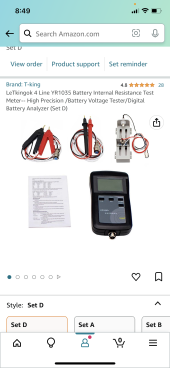Those washers have been flattened to remove the sheared wipe and the edges buffed off as to not cut or stress the top laminate of the buss. The washer puts pressure over a larger area of the buss. Above that washer is the ring terminal then a Bellevue washer and finally the nut with a smooth/flat bottom. Normally you’d be right putting the terminal right on the buss, but there’s only 2 amps, no measurable resistance and I put clamping area ahead of terminal position. You might notice that the edges of all the flexible buses are have an orange sealer(not silicone) so that with time and moisture they will be less likely to delaminate.Are that washers under the BMS cables?
I would place them directly onto the busbars keeping locknuts and nuts on top.
Yeah, I know, I got carried away.
Last edited:





